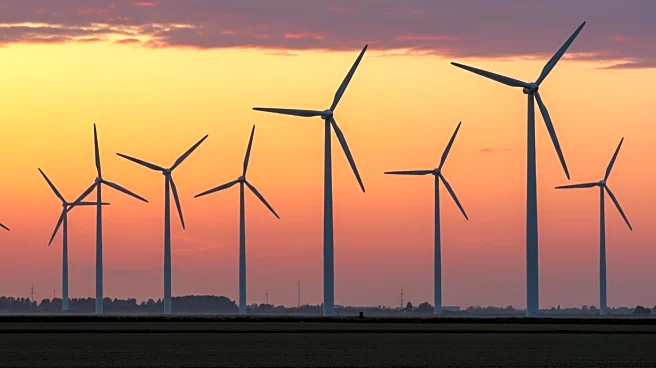What's Happening?
The Trump administration has introduced new guidance from the Treasury Department that further restricts federal tax credits for solar and wind energy projects. This move is part of a broader effort by President Trump to dismantle existing rules supporting renewable energy. The guidance affects projects that begin construction after September 2, 2025, requiring them to demonstrate physical construction rather than relying on the previously accepted 5% safe harbor rule. This change is expected to complicate the financing and development of renewable energy projects, particularly impacting smaller developers who rely on these credits.
Why It's Important?
The restriction of tax credits for renewable energy projects could have significant implications for the U.S. energy sector. By making it more difficult and expensive to build and finance solar and wind projects, the new rules may slow down the transition to clean energy, affecting efforts to meet growing energy demands and reduce reliance on fossil fuels. This could lead to higher energy costs for consumers and hinder the development of infrastructure needed to support emerging technologies like AI. The move also risks increasing dependence on foreign energy sources, particularly from China, which is advancing rapidly in renewable energy production.
What's Next?
Industry groups such as the Solar Energy Industries Association (SEIA) are reviewing the guidance and strategizing next steps to protect the interests of the renewable energy sector. There is potential for legal challenges against the guidance, which some experts have labeled as unprecedented and possibly illegal. State leaders may need to take executive actions to expedite project approvals and mitigate the impact of these federal restrictions. The industry is also awaiting further guidance on trade barriers and foreign entity concerns, which could further influence development strategies.
Beyond the Headlines
The new guidance raises ethical and legal questions about the administration's approach to energy policy and its alignment with congressional intent. The decision to restrict tax credits could be seen as prioritizing political agendas over environmental and economic sustainability. It also highlights the ongoing tension between federal and state energy policies, with states potentially stepping in to support renewable projects despite federal obstacles.












